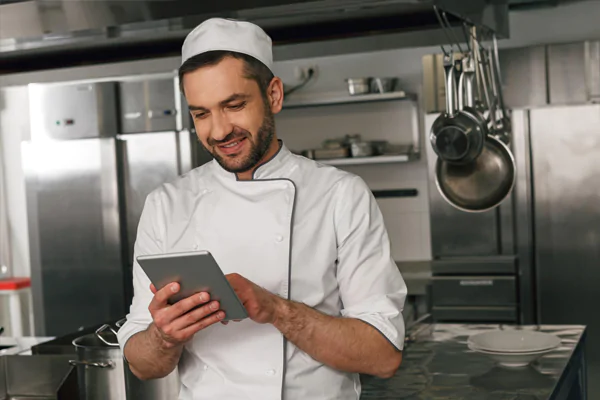
In the food service industry, monitoring temperatures is crucial for stored and cooked inventory to ensure food safety and quality. However, the approaches and requirements for monitoring equipment temperature for stored inventory differ significantly from those for monitoring food temperature for cooked inventory. Here’s a detailed comparison:
Purpose and Focus
Equipment Temperature Monitoring (Stored Inventory):
- Purpose: Ensures storage equipment (refrigerators, freezers, etc.) maintains appropriate temperatures to keep perishable foods safe.
- Focus: Monitoring ambient temperatures inside storage units to prevent spoilage and bacterial growth in stored ingredients.
Food Temperature Monitoring (Cooked Inventory):
- Purpose: Ensures cooked food reaches and maintains safe temperatures to eliminate pathogens and prevent foodborne illnesses.
- Focus: Monitoring the internal temperatures of cooked food to ensure they are cooked thoroughly and maintained at safe serving temperatures.
Monitoring Requirements
Equipment Temperature Monitoring:
- Frequency: Continuous, 24/7 monitoring is ideal for detecting and responding to deviations from safe temperature ranges.
- Parameters: These are typically set to specific ranges for different types of storage (e.g., refrigerators at 34-40°F, freezers at 0°F or below).
- Technology: Automated temperature monitoring systems with sensors placed inside storage units to track ambient temperatures continuously.
Food Temperature Monitoring:
- Frequency: Periodic checks, particularly at crucial stages of the cooking process and before serving.
- Parameters: Specific internal temperature targets based on food type (e.g., chicken at 165°F, beef at 145°F, reheated leftovers at 165°F).
- Technology: Use food thermometers or probes to measure the internal temperatures of cooked food items at designated times.
Alert and Response Mechanisms
Equipment Temperature Monitoring:
- Alerts: Automated systems send real-time alerts (via SMS, email, app notifications) if temperatures fall outside safe ranges.
- Response: It would be great if you could immediately take corrective actions, such as adjusting settings, servicing equipment, or transferring inventory to another unit.
Food Temperature Monitoring:
- Alerts: Manual or semi-automated alerts when internal temperatures do not meet safety thresholds during checks.
- Response: Continue cooking until safe temperatures are reached, discard improperly cooked food, or reheat leftovers as necessary.
Compliance and Record Keeping
Equipment Temperature Monitoring:
- Records: Automated systems log temperature data continuously, generating digital documents that are easy to access and review.
- Compliance: Simplifies compliance with food safety regulations by maintaining detailed and accurate inspection temperature logs.
Food Temperature Monitoring:
- Records: Manual logging of temperature readings during periodic checks, often documented in logbooks or digital systems.
- Compliance: Ensures compliance with cooking and holding temperature standards set by health authorities, though records are more prone to human error.
Impact on Operations
Equipment Temperature Monitoring:
- Efficiency: Reduces manual monitoring workload, allowing staff to focus on food preparation and customer service.
- Cost Savings: Prevents food waste due to spoilage and reduces repair costs by catching equipment issues early.
Food Temperature Monitoring:
- Efficiency: Requires staff attention during critical points of the cooking process, potentially slowing down operations if managed poorly.
- Quality Assurance: Directly impacts food safety and quality, ensuring that cooked food is safe and meets taste expectations.
Technological Integration
Equipment Temperature Monitoring:
- Integration: Can integrate with other restaurant management systems (inventory, POS) for streamlined operations and comprehensive oversight.
- Automation Level: High, with minimal manual intervention required once set up.
Food Temperature Monitoring:
- Integration: It may integrate with kitchen display systems or other cooking equipment, but it often requires manual input.
- Automation Level: Lower, relying significantly on staff for accurate temperature measurement and logging.
Conclusion
While equipment temperature monitoring for stored inventory and food temperature monitoring for cooked inventory are essential for maintaining food safety and quality, they serve different purposes and involve distinct processes and technologies. Equipment temperature monitoring focuses on ensuring the proper storage environment for ingredients, leveraging automation for continuous oversight. In contrast, food temperature monitoring centers on verifying that cooked food reaches safe internal temperatures, often relying on manual checks during cooking. Together, these monitoring practices form a comprehensive approach to food safety in the restaurant industry.







